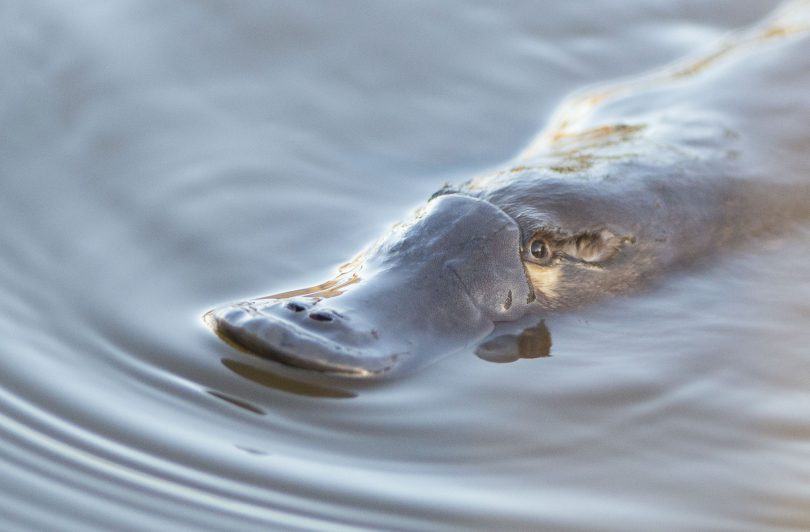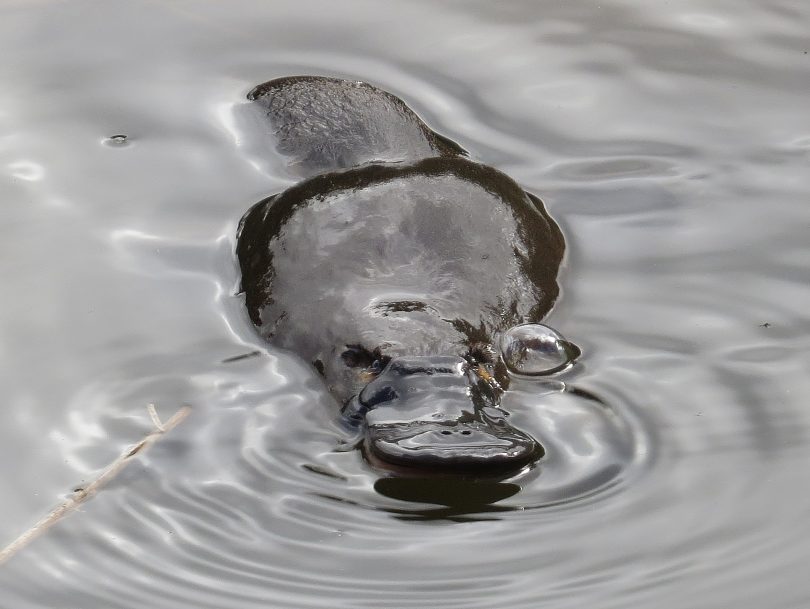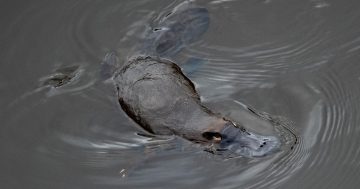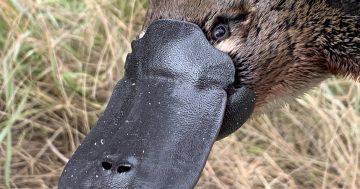
Platypus can be seen in Canberra waterways during August as they hunt for water bugs. File photos.
An ecologist is calling for the “irresponsible” selling of yabby traps on store shelves to stop after an illegal yabby trap killed four platypuses near Braidwood earlier this week.
A passing fisherman found the dead platypuses in an “opera house” yabby trap, which are banned in freshwater in parts of NSW.
Waterwatch regional facilitator Woo O’Reilly, who is in charge of the ACT Government’s Platypus Month this August, said the devastating loss of the platypuses is “senseless” and is calling on the traps to stop being stocked.
“The danger of opera house traps is the ring on them is bigger than a lot of the other yabby traps,” she shared. “Platypus and rakali (water rats) go into the traps after the yabbies and it’s nearly impossible for them to get out.
“They drown because they need to come up and breathe. It is a devastating number of platypuses to lose in one go.
“These traps are $5 a pop at camping stores. They are irresponsibly sold because they are just so cheap. They are terrible things.
“They are banned to be used in all public waterways in the ACT and the surrounding NSW region but yet we still sell them. I hope stories like these put pressure on retailers to stop selling them altogether.”

Ms O’Reilly said more research and monitoring needs to occur if Canberra’s platypus population is to survive.
During August, platypus can be seen in waterways across the ACT as they continue their search for their main source of food – water bugs. Ms O’Reilly said late winter is the ideal time for spotting platypus as they spend more time feeding and the males are out and about preparing for the breeding season.
“Platypus eat a third of their body weight every day,” Ms O’Reilly said. “Water bug numbers start to get really low by August and so platypuses spend more time foraging to get their bug quota for the day, so they become more conspicuous.
“Last August, platypuses were sighted in places that you wouldn’t normally see them. We saw them in Regatta Point, near the library, near the museum, and we even saw them in Lake Tuggeranong for the first time.”
While the sighting of a platypus in Lake Burley Griffin might be exciting for some, seeing them in unusual habitats is cause for concern for Ms O’Reilly.
“The theory is that dry autumns and winters usually lead to fewer numbers and less successful breeding because they don’t have the resources to build up and breed and because they are spreading to marginal habitats to look for bugs,” she told Region Media.
“They are heading to these marginal areas because they are stressed.
@liam.cbr captures Lake Burley Griffin's platypus
Instagrammer @liam.cbr shared this video of the platypus that has been spotted in Lake Burley Griffin. Renowned for being notoriously shy, this little creature must've been attracted to the amazing service and staff at the Canberra and Region Visitors Centre at Regatta Point that it decided to spend a few hours there this weekend. Share your Lake Burley Griffin platypus sightings with us using #VisitCanberra on Instagram, Twitter or Facebook.
Posted by Visit Canberra on Monday, August 6, 2018
“Lake Tuggeranong and Lake Burley Griffin are not key habitats for them and I don’t think they are thriving there so that makes me concerned.
“Seeing them in the heart of our national capital is such a cool thing but it doesn’t mean it a healthy and happy platypus.”
Ms O’Reilly said more research and monitoring needs to occur if Canberra’s platypus population is to survive.
“As development continues and the pressures are great, I think it is really important for us to have a better understanding of populations and ensure that future generations have the privilege of seeing them in the heart of the capital,” she said.
“I am concerned how little we know about them, to be honest. We are the only people doing any dedicated monitoring on platypus in this part of the world.
“When we spot a platypus, we don’t know if they are female or male, whether they are in good condition and we don’t know the full population numbers. We need to be careful that while we celebrate platypuses and it is exciting to see them, we need to understand and do more if we are going to sustain the species.”
Waterwatch is running 22 one-hour surveys that take place during dawn and dusk at Jerrabomberra Wetlands, the Molonglo River and the Murrumbidgee River. Ms O’Reilly is also hosting a free hour-long walk on 11 August starting from the Isabella Street footbridge in Queanbeyan to spot platypuses.
If you spot a platypus, report the sighting to waterwatch@act.gov.au and include the time, date, location and any notes about behaviour and habitat.
More information about survey times and the various monitoring programs can be found by clicking here. If you’re interested in taking part in the surveys, send an email to waterwatch@act.gov.au.














